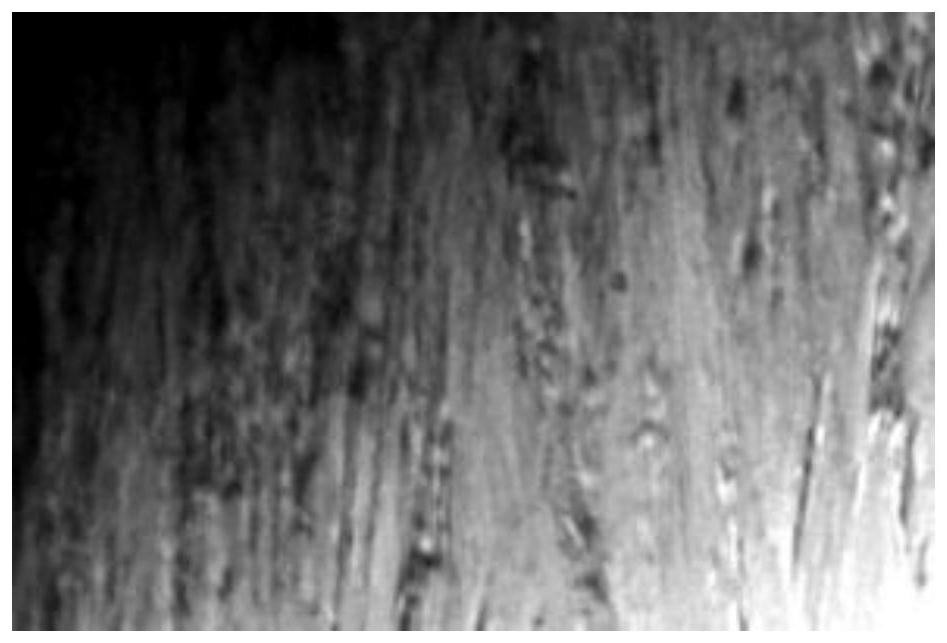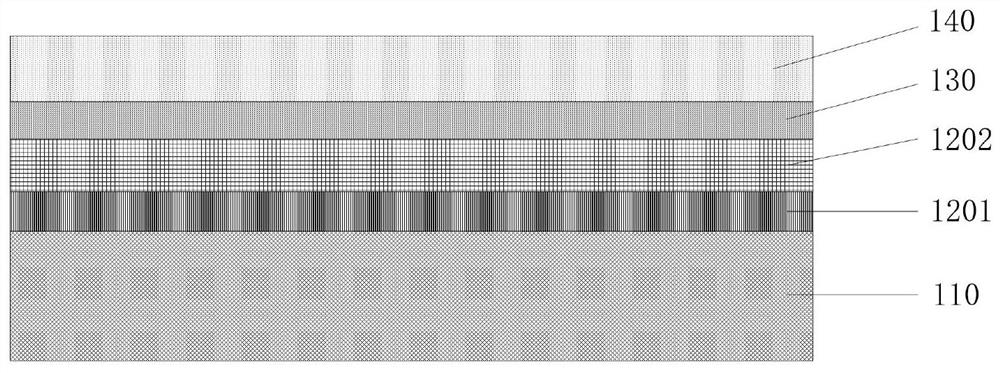Composite substrate, composite film and preparation method thereof, and radio frequency surface acoustic wave device
A composite substrate and composite thin film technology, applied in the direction of electrical components, impedance networks, etc., can solve the problems of chemical bond breaking between layers, falling off, insufficient carrier trap density, etc.
- Summary
- Abstract
- Description
- Claims
- Application Information
AI Technical Summary
Problems solved by technology
Method used
Image
Examples
preparation example Construction
[0046] The embodiment part of the present application also provides a kind of preparation method of composite film, specifically, such as Figure 4 Shown, preparation method comprises the following steps:
[0047] Step S11 , cleaning the substrate layer 110 to obtain the substrate layer 110 with a clean surface.
[0048] Optionally, in this step, the substrate layer 110 uses the RCA wet chemical cleaning method to remove particle contamination and some metal impurities on the substrate layer 110. The material of the substrate layer 110 can be silicon, lithium niobate, lithium tantalate, quartz, sapphire, Silicon carbide, etc., and the material of the substrate layer 110 can be selected according to needs, and this step is not specifically limited.
[0049] Step S12, placing the substrate layer with a clean surface in a deposition furnace and heating it to a first temperature, which is lower than the growth temperature of columnar structure crystals.
[0050] Optionally, in t...
Embodiment 1
[0067] Embodiment 1 (ion implantation method is combined with bonding separation method)
[0068] 1) Prepare the single crystal silicon substrate and clean it by RCA wet chemical cleaning method.
[0069] 2) The single crystal silicon substrate cleaned in step 1) is placed in a low-pressure vapor deposition furnace and heated to 580°C.
[0070] 3) Pass SiH 4 At the same time, increase the growth temperature to 625°C at a rate of 10°C / min to obtain a grain gradient layer with a thickness of 50nm. The grains in the grain gradient layer grow from the maximum width of less than 30nm to columnar grains, forming uniform grains. layer.
[0071] 4) growing silicon dioxide on the uniform layer of crystal grains, and grinding and polishing the grown silicon dioxide to form an isolation layer.
[0072] 5) Prepare a lithium niobate wafer with the same size as the single crystal silicon substrate, and implant helium ions (He+) into the lithium niobate wafer by ion implantation. The impl...
Embodiment 2
[0076] Embodiment 2 (bonding method is combined grinding and polishing method)
[0077] 1) Prepare the single crystal silicon substrate and clean it by RCA wet chemical cleaning method.
[0078] 2) The single crystal silicon substrate cleaned in step 1) is placed in a low-pressure vapor deposition furnace and heated to 500°C.
[0079] 3) Pass SiH 4 Gas, while increasing the growth temperature to 625°C at a rate of 5°C / min to obtain a grain-graded layer with a thickness of 200nm. The grain-graded layer grows from amorphous silicon to polysilicon containing columnar grains.
[0080] 4) growing silicon dioxide on the uniform layer of crystal grains, and grinding and polishing the grown silicon dioxide to form an isolation layer.
[0081] 5) Prepare a lithium niobate wafer of the same size as the single crystal silicon substrate, clean the process surface, and use the method of plasma bonding to bond the process surface of the cleaned lithium niobate wafer to the second prepared...
PUM
| Property | Measurement | Unit |
|---|---|---|
| thickness | aaaaa | aaaaa |
Abstract
Description
Claims
Application Information
 Login to View More
Login to View More - R&D
- Intellectual Property
- Life Sciences
- Materials
- Tech Scout
- Unparalleled Data Quality
- Higher Quality Content
- 60% Fewer Hallucinations
Browse by: Latest US Patents, China's latest patents, Technical Efficacy Thesaurus, Application Domain, Technology Topic, Popular Technical Reports.
© 2025 PatSnap. All rights reserved.Legal|Privacy policy|Modern Slavery Act Transparency Statement|Sitemap|About US| Contact US: help@patsnap.com



